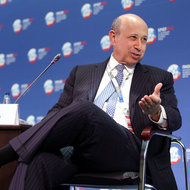The results were an improvement from Oracle’s previous quarter, when its revenue fell slightly from a year earlier.
The latest quarter spanned September through November. That makes Oracle the first technology bellwether to provide insight into corporate spending since the Nov. 6 re-election of President Obama and negotiations to avoid a fiscal crisis began to heat up in Washington.
Oracle said it earned $2.6 billion, or 53 cents a share, in its fiscal second quarter. That compares with net income of $2.2 billion, or 43 cents a share, a year earlier.
If not for charges for past acquisitions and certain other costs, Oracle said it would have earned 64 cents a share. On that basis, Oracle topped the average earnings estimate of 61 cents a share among analysts surveyed by FactSet.
Revenue increased 3 percent from last year to $9.1 billion, about $900 million more than analysts had projected.
In a particularly heartening sign, Oracle said sales of new software licenses and subscriptions to its online services climbed 17 percent from last year to outstrip the most optimistic predictions issued by management three months ago.
The flow of new licenses and subscriptions, which represent about a quarter of Oracle’s revenue, is closely tracked by investors because they lead to more revenue in the future from upgrades.
In the current quarter, which ends in February, Oracle expects software licenses and subscriptions to increase in the range of 3 percent to 13 percent from the previous year. The company, based in Redwood Shores, Calif., predicted its adjusted earnings in the current quarter will range from 64 cents to 68 cents a share on revenue ranging from $9.1 billion to $9.5 billion. That would be a 1 percent to 5 percent increase from the prior year.
Shares of in Oracle rose 1.28 percent in extended trading after the numbers came out. They ended regular trading at $32.88.
In Tuesday’s conference call, the chief executive, Lawrence Ellison, said some of the erosion in the hardware division has been by design as Oracle weeded out some of the less profitable equipment. He assured analysts that hardware revenue would start increasing in the final quarter of Oracle’s fiscal year, the period spanning March through May. Sun’s Java programming language already has been paying off for the software side of Oracle’s business, according to Mr. Ellison.
“Sun has already proven to be the most strategic and profitable acquisition Oracle has ever made,” he said.
Article source: http://www.nytimes.com/2012/12/19/business/oracles-profit-climbs-18.html?partner=rss&emc=rss
